Eco-style kitchen: features, design and design tips

Ecostyle is the creation of a harmonious corner for unity with nature in a city apartment. The founders of the interior design trend are Japanese and Scandinavian designers. Now it has become known all over the world and is gaining more and more popularity every day. The stone jungle, stuffy offices, the bustle of the subway - all this forces people to create comfort at home. Eco-friendly style is especially widespread in metropolitan areas, where people are most exposed to stress and cut off from nature.
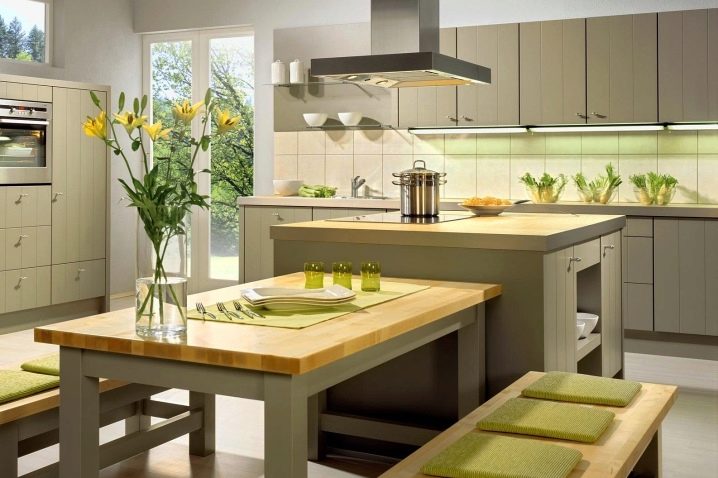
Style traits
In the design of such an interior, only natural shapes and smooth lines are allowed.
For the eco-design kitchen, exclusively natural and environmentally friendly materials are used. Plastic and synthetic elements are strictly prohibited, the only exception to this rule is the required minimum of household appliances (but with reduced energy consumption) hidden behind the natural facades of built-in kitchen furniture.
The largest area in the kitchen should be open space, which promotes free air circulation.
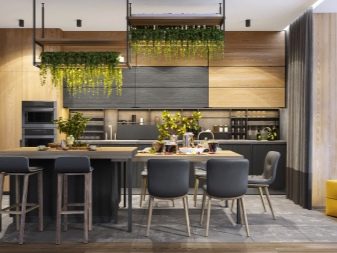
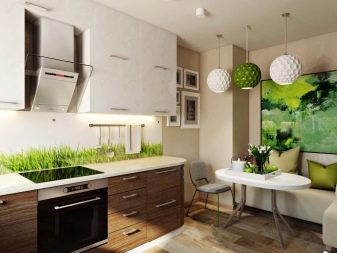


The design uses only natural colors and shades, each of which has its own meaning:
- beige - brings calmness, suitable for wall decoration;
- pale green - the color of harmony, has a beneficial effect on the nervous system and helps to overcome stress (it must be used carefully so as not to distract attention from living plants in the room);
- sand - soft natural color, perfect for floor decoration;
- White - visually expands the space, is associated with purity and joy, its share can be up to 50% in the interior;
- sky blue - gives lightness to the room, looks good on the ceiling, and when applied to the walls reduces appetite;
- pale yellow - associated with the sun, cheerfulness (appropriate in the design of facades);
- light gray - gives rest to the eyes, is used in textile elements, but there should be a minimum of it in the interior of the eco-kitchen, otherwise the room will look gloomy;
- Brown - conservative color, associated with confidence, makes the space heavier, so it should be used minimally (for example, in the design of open shelves).

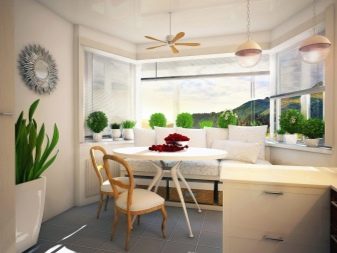
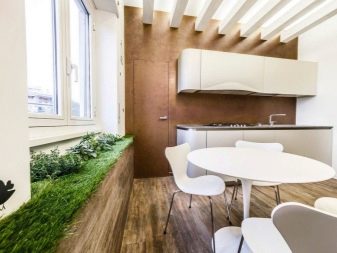
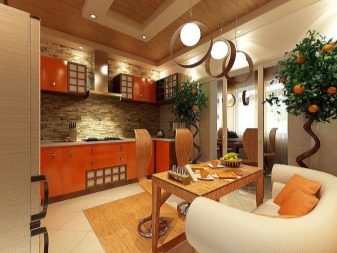
In an eco-friendly style, bright accents are unacceptable. Calm colors also need to be used carefully: for example, olive shades absorb light and visually “eat up” the space, so they are not suitable for such an interior.
The abundance of light is another feature of eco-style: floor-to-ceiling windows are welcome. However, such a solution is impossible in typical apartments, since the external walls are load-bearing, and it is strictly forbidden to make changes to them. You can put a glass balcony door, wooden double-glazed windows (they need special processing and painting), thus increasing the penetration of natural light into the room.
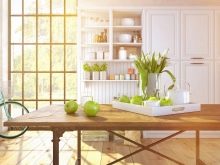

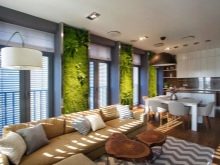
The lack of natural light can be compensated for by diode bulbs with a warm spectrum. They are environmentally friendly, as they do not contain mercury, and economical - they consume very little energy.
Do not confuse eco-friendly style with rustic or Russian folk style., because ecodesign is a symbiosis of minimalism and environmental friendliness, there is no place for ornaments, patterns, recognizable paintings of Gzhel, Khokhloma and others.A faceless interior with monochromatic walls of various natural textures with the main emphasis on living greenery: a bouquet of daisies in a vase, ornamental grass in clay pots on the shelves - all this gives a feeling of harmony and serenity after the bustle of the city.
To decorate a kitchen in an environmentally friendly style, you first need to carefully measure the room, draw up a plan and cost estimate, exclude all unnecessary according to the ready-made list (for example, there should be one vase with flowers, pictures are inappropriate - a small panel with dried flowers is better), only then proceed with the purchase building materials.
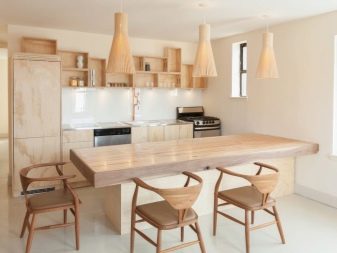
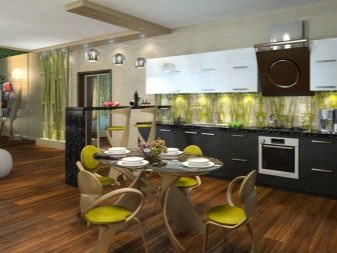

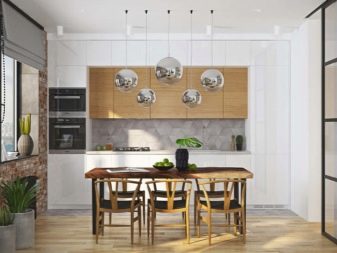
Eco-friendly materials
Eco-friendly interior design materials must be durable and resistant to frequent changes in humidity and temperature during cooking. In addition to wood, glass and sand, it is permissible to use artificial stone.

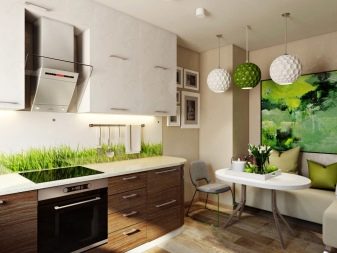
You can also include decorative moss in the interior, but very carefully, because it is quite difficult to care for it, it is better to practice on a small area of moss, purchased before the repair.
Ceiling
To decorate the ceiling, the simplest materials are used: you can whitewash with ordinary lime - the space will be additionally expanded. You can also sheathe the ceiling surface with wood panels, sometimes even stained glass or painting with imitation of a clear sky is used when decorating the ceiling.


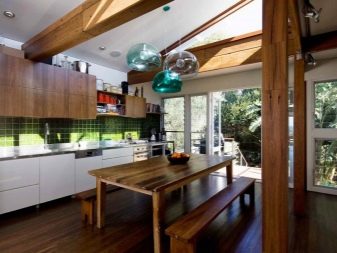
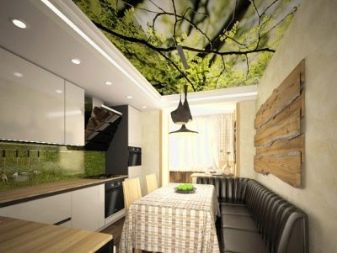
Walls
Various natural materials can be used in the decoration of the walls.
- Sea pebbles - for a kitchen apron. In order to facilitate maintenance and increase the service life, you can cover the surface with tempered glass.
- Clay - to create texture on walls or imitate the roots and trunk of a tree.
- Decorative clinker brick - the masonry can simply be painted with whitewash or light, environmentally friendly paint.
- Cork covering - This is a practical, but very expensive material. It is advisable to use it only for walls, since the slightest traces remain on it, even from the legs of chairs, and such material is not suitable for floor decoration.
- Wallpaper for the walls is used exclusively paper. An accent is created with color or an unobtrusive natural pattern on one surface, while the other three walls remain monochromatic.
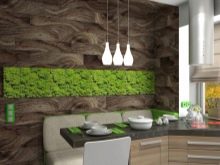
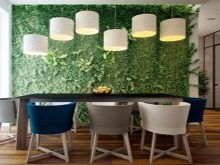

The design of the walls should visually expand the space without distracting from the beauty of living plants in the interior.
Floor
It is better to cover the floor with a moisture-resistant laminate, ceramic tiles imitating natural wood or stone, or wooden planks.
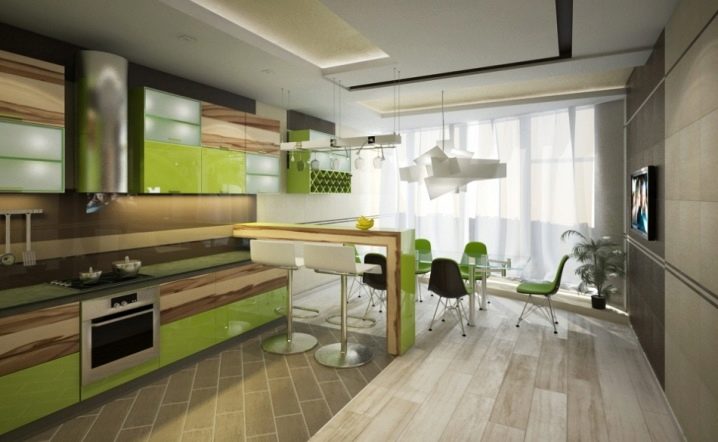
Furniture
Making kitchen furniture made of solid wood is too expensive, therefore, you can combine materials, which will significantly reduce the cost of the project:
- MDF (for the manufacture of the frame);
- solid wood (for facade design).
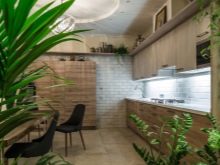
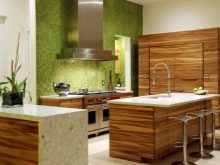
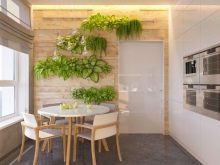
And you can also use veneer, it is inexpensive, environmentally friendly, durable (service life up to 15 years). It is easy to care for such a surface - just wipe it with a damp cloth.
Work surfaces must not only be environmentally friendly, but also durable. The strongest material is stone. Stone backsplash and countertops should be installed last for a perfect fit of work surfaces (after installing the hob, dishwasher and other household appliances).
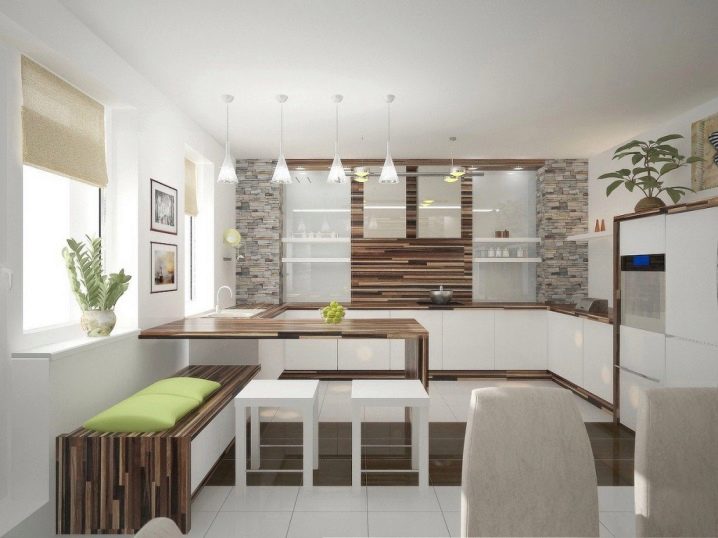
Live plants
Living plants should be the main component in an environmentally friendly interior. Flowers can be arranged in clay pots on shelves, windowsills and work surfaces. It is appropriate to place lemon or orange trees in wooden tubs on the floor. You can grow herbs on the windowsill - their delicate aroma will complete the creation of a natural atmosphere.
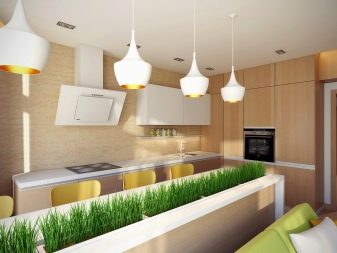
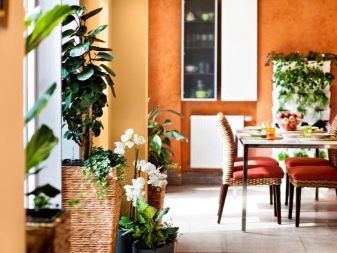
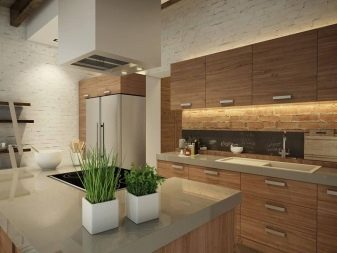
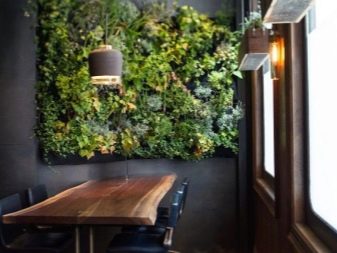
Some flowers and plants are recommended specifically for the kitchen:
- geranium - disinfects the air;
- begonia - blocks the reproduction of microbes in high humidity;
- aloe vera - absorbs carbon dioxide.
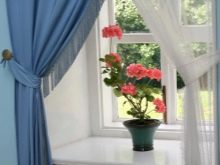
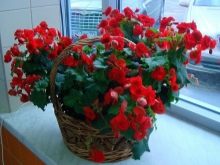
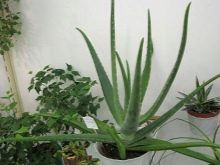
To facilitate the care of greens, it is permissible to use special pots with a moisture indicator or put a reminder on the phone so as not to forget to water on time.
If desired, you can harmoniously fit into such an interior a glass round aquarium with small fish that are unpretentious to care for (for example, guppies).
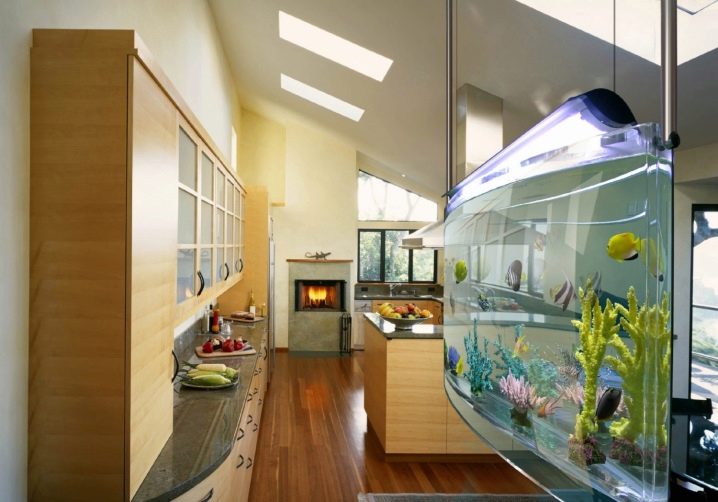
Accessories
Accessories made of various natural materials will beautifully complement the eco-friendly design of the room.
Eco-kitchen welcomes:
- tableware made of wood, ceramics and glass (without drawing and patterns);
- mats, homespun floor mats;
- chandeliers and lamps with wooden shades, and they can also be made of rice paper, forged or glass;
- curtains or roman blinds made of light natural fabrics (linen, cotton);
- matting towels (such material perfectly absorbs liquid);
- burlap chair covers;
- dining table made of wood;
- paintings from natural materials.
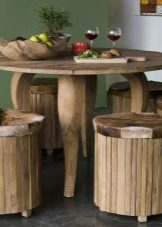
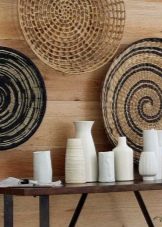
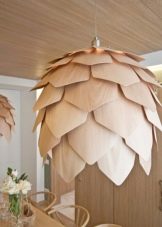
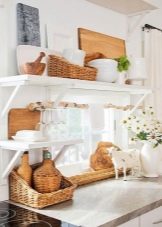
Additional comfort can be created with the help of a wooden bread box, a wicker basket for baking, a beautiful napkin holder.
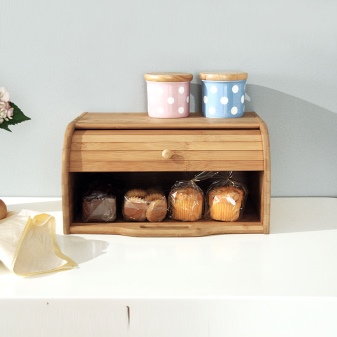
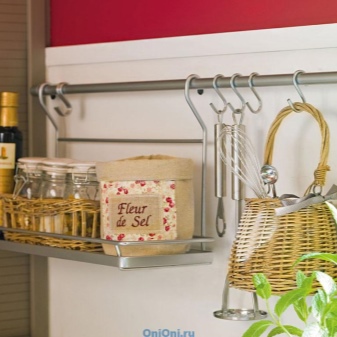
Eco-style kitchen furniture should traditionally be made of maple, pine, jute, bamboo. Wicker chairs made of rattan or grapevine look very nice.
Ecodesign is suitable for gardeners, environmentalists, people with disabilities, businessmen, young parents and creative people.

People spend a lot of time in the kitchen preparing and eating food, so creating eco-style is important in this room. The atmosphere close to nature improves mood, helps with insomnia, and also helps to harmonize family relationships (if necessary).
See the next video for the design of a light green kitchen in eco-style.













The comment was sent successfully.